Harajuku Chronicles: Diving into Tokyo's Epicenter of Fashion and Subculture
Thinking about visiting Harajuku? Find out where to go, what to do, and what to eat in this bustling district.
Harajuku = Tokyo's Cultural Phenomenon
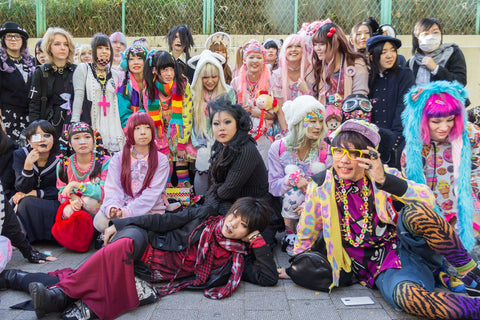
Harajuku is a district located between the Shinjuku and Shibuya wards of Tokyo, Japan. The area is famous for being the vibrant epicenter of youth culture, fashion, and creativity in Tokyo. Hence, you’ll find countless boutiques, restaurants, cafés, and international chain stores. Harajuku is also home to a number of local attractions, including Yoyogi Park and Meiji Shrine. Every year, over 100,000 domestic and foreign tourists visit Harajuku, making it one of the go-to destinations for young people. It contains several train lines in the Tokyo subway network, allowing for easy transportation within and outside the district.
From vibrant street art to creative cosplay attire, Harajuku is the ideal place to explore an interest in Japanese street fashion and pop culture. In this post, we’ll reveal ways to make the most of your time in the area, including festivals to attend, fun places to visit, stores to shop at, and food to eat. Join us as we explore Harajuku in all its youthful glory.
The Heart of Harajuku: Takeshita Street
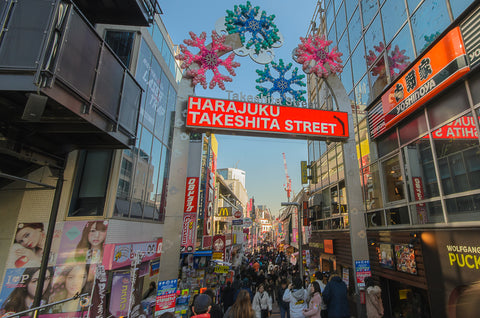
Takeshita Doori, or Takeshita Street, is the heartbeat of Harajuku in more ways than one. There’s a good chance that many of the Japanese fashion trends you’ve seen originated on this street. About 8 minutes walking distance from Harajuku Station, Takeshita Doori is narrow and only about 400 meters long, but its history stretches back to the 1980s, when teenage dance groups were rampant on the street. Later in the 1980s, the street became popular as a marketplace for buying and selling counterfeit fashion brands.
Today, Takeshita Street is Harajuku's most famous pedestrian shopping street. You’ll find a wide variety of fashion boutiques selling the latest trends and outfits that range from playful to over-the-top. High-end vintage stores are also common in the area. Although most of the items they sell are not cheap, you can find stores with reasonable prices if you know where to look.
Takeshita Street isn’t only about fashion. People also go there to buy some of the best Japanese sweets and snacks in Tokyo, thanks to the candy stores and cafes littered across the street. After exploring Takeshita Dori, feel free to check out other streets in Harajuku and discover more unique fashion styles.
Understanding Harajuku Fashion: From Kawaii to Gothic Lolita
Introducing Harajuku fashion, an historical movement that began as a protest against strict societal rules. Today, Harajuku fashion is still alive, and a weekend in the district will place you in the midst of hundreds of people walking around in colorful and eccentric outfits. Harajuku fashion is a rich blend of inspiration from different domestic and foreign regions. People combine ideas from both Japanese and Western clothing cultures, no matter how outrageous they appear. With imagination being the only limit, these styles are as creative as they come. Let's explore some of the most popular ones and how they reflect the creative spirit of the district.
Lolita
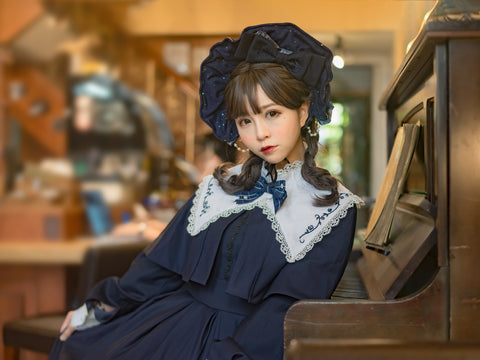
The Lolita fashion style began in the 1970s and was inspired by the Otome-kei movement and Victorian fashion. With a strong focus on cuteness and doll-like appearances, the style can be divided into three main sub-styles: Gothic Lolita, Sweet Lolita, and Classic Lolita.
The gothic version uses dark colors combined with red and purple to create an eerie appearance. Dresses are also feminine, maintaining the cuteness theme. But the makeup tends to be exaggerated. Sweet lolita has a similar dress style, but the colors are brighter and more playful. The makeup is also lighter, with an emphasis on flirty looks.
Kawaii
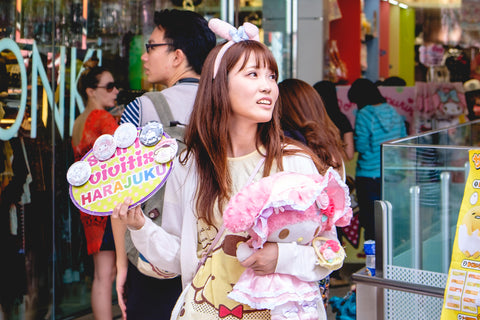
This is another fashion style that embodies Japan’s cuteness culture. Some people consider kawaii fashion to be the concept behind many other Japanese street fashion styles, including lolita and decora. Although female-dominated, kawaii fashion is also open to men, as they can cross-dress in kawaii and use masculine accessories.
Cosplay

Short for “costume playing,” cosplay involves dressing up as anime characters. It’s a popular fashion trend that has long left the shores of Japan to settle in the United States and Europe. It’s not uncommon to find Naruto, Goku, or Aang casually strolling down the streets of Harajuku.
Visual kei

Created in the mid-80s, visual kei is an expression of unconventional hair and makeup styles. It uses attire similar to that of Western glam metal and fashion concepts that could apply to either male or female genders. Other types of kei fashion are dolly, cutesy, girly, and decora.
Gyaru

The term “gyaru” is a transliteration of the English slang “gal.” Gyaru fashion style is extremely Western in nature, borrowing from the tanned skin, skimpy clothes, and colorful hair of a stereotypical Western teenage girl.
Omotesando: Harajuku's Chic Avenue
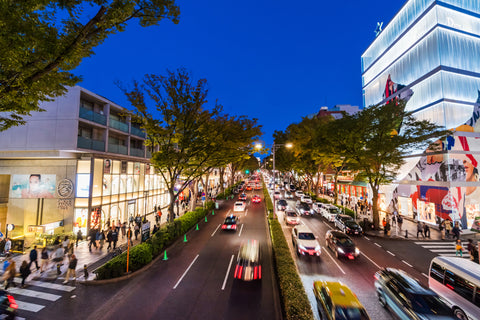
If Takeshita Street caters to youthful exuberance, Omotesando Avenue is the place to go if you want something more mature and sophisticated. Renowned for its high-end boutiques, architecture, and cafe culture, Omotesando lies between the outskirts of Harajaku and some of Tokyo’s wealthiest neighborhoods in Aoyama. Although one kilometer long, Omotesando doesn’t see as many crowds as Takeshita Dori, so don’t expect to get in many queues. However, there are a lot of shoppers in the area, most of them on the hunt for sophisticated and elegant fashion items.
When in Omotesando, you may enjoy looking at the amazing architecture on display. And if you can afford it, a shopping spree at one of the name-brand stores like Prada or Dior could become the highlight of your visit. Art is also a significant part of the Omotesando street culture, so feel free to visit a museum or gallery in the area. You’ll find ancient pieces dating as far back as the Russo-Japanese War.
Meiji Shrine: A Tranquil Escape in Harajuku
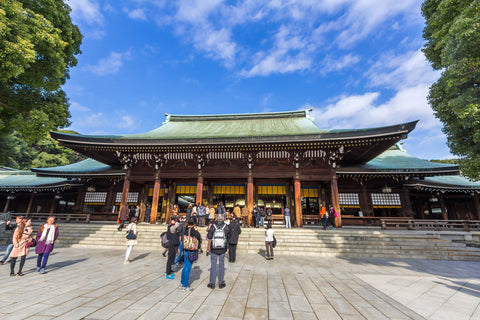
Earlier, we mentioned Harajuku’s value as a cultural attraction. The Meiji Shrine is one of the most popular locations for tourists visiting the district. It’s a Shinto shrine built in honor of the spirits of Emperor Meiji and his wife, Empress Shoken. The emperor ruled the Japanese empire from 1867 to 1912 (45 years). During his reign, Japan made massive economic, political, and social strides to become a global powerhouse.
The serene Meiji Shrine, adjacent to JR Harajuku Station, offers a peaceful retreat amidst the city's hustle and bustle and a glimpse into Japan's rich cultural heritage. It has its own museum and garden, perfect for tourists. Festivals held at the Meiji Shrine include Oharae (purification rituals), Kigensai (National Foundation Day Festival), and Tenchosai (Emperor’s Birthday celebration). The shrine is a popular host for Shinto weddings. Also called Meiji Jingu, this cultural and religious attraction sees millions of visitors in the first week of every New Year because many Shinto believers prefer to say their first prayers at the shrine. No other temple in the country can boast of that.
Harajuku's Street Art and Urban Culture

If you’re a fan of urban street art, you won’t be disappointed walking down the streets of Harajuku. Vibrant graffiti, murals, and performances contribute to the district's dynamic atmosphere. The best place to find these art pieces is Takeshita Street. There’s the famous Now is Forever mural created by American graffiti artist Stephen Powers, symbolizing human compassion. A HUG clothing store also has a powerful mural on the same street. Located in the Jingumae district, a few minutes walk from Takeshita Street, is the Design Festa West Gallery, which is a must-visit for art lovers in town. Omotesando isn’t left out, as it has its own fair share of mural displays, including the cartoon painting of sandwich-loving girls outside the Mmmozza Sandwich Shop. Finally, there’s Cat Street with its Hole mural, a dark piece that offers a contrast to the surrounding brightness.
The Evolution of Harajuku: Past to Present.

Harajuku wasn’t always known as a fashion hub. In fact, it was just a regular town under the rule of the shogunate and inhabited by local farmers. It took World War II for things to change, but that change came at a cost. By the end of the war in 1945, a large portion of Harajuku had been destroyed.
The US military occupation led to the establishment of a family complex called Washington Heights, in what we now know as Yoyogi Park. This led to shops opening in Harajuku that appealed to the Western culture of the soldiers and their families. Kiddyland, Fuji Tori, and Oriental Bazaar were among the most notable of these shops. By the 1970s, when youth fashion culture became rampant in Harajuku, it came in the form of a rich blend of both Japanese and Western cultures. For a while, the district was a hub for alternate fashion, where people could access second-hand and counterfeit fashion items. However, it has become a global trendsetter today.
Iconic Eats: Harajuku's Street Food Scene
There’s a lot more to enjoy in Harajuku than shopping. The district is also famous for its take on Japanese cuisine and street food offerings. Hence, its culinary scene is as innovative and eclectic as its fashion. You’ll find several places selling snacks, sweets, and dessert meals. Below are some of their best offerings:
1. Crepes: The thin pancakes in Harajuku are filled with delicious ingredients such as sushi, chocolate, whipped cream, azuki beans, or strawberry.

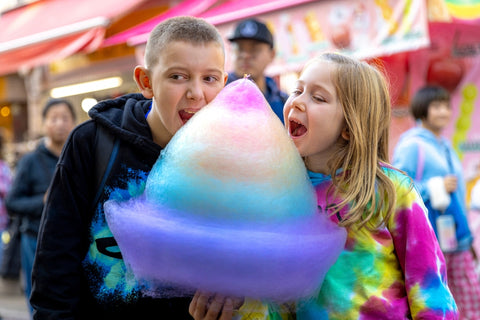
3. Candy apples: The Harajuku take on candy apples is coated in various unconventional flavors, including matcha, roasted soybean, cinnamon sugar, and yogurt chocolate.
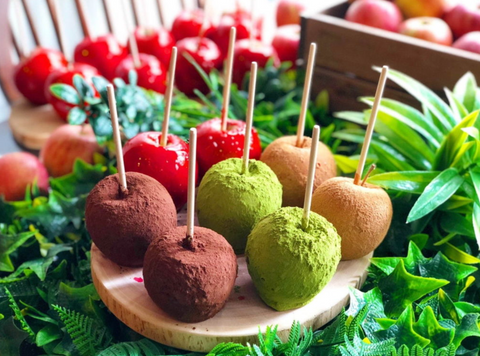
Shopping in Harajuku: A Guide for Trendsetters
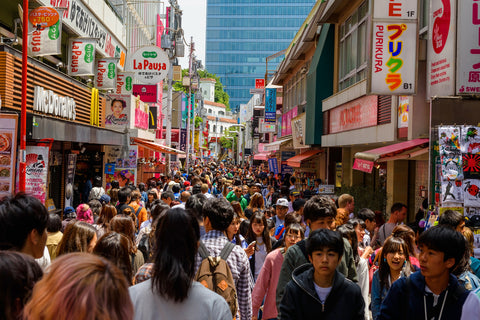
Get your wallets ready as we embark on a journey through Harajuku’s shopping scene. Below is a shopping guide showcasing the best places to buy fashion items in the district.
-
Body Line and Boutique Takenoko: These are two fashion shops in the same building. Located along Takeshita Street, they both offer eccentric Japanese streetwear.
-
W♥C: This is a fashion brand synonymous with girly Japanese streetwear. The shop is located on Takeshita Street, and most of its products are affordable. You’ll find lolita girls attire, punk fashion items, and many more.
-
WEGO: This is another fantastic place to shop for trendy and affordable clothes in Harajuku. WEGO has two shops in Harajuku: one on Takeshita Street and another on Meiji Street.
-
Laforet Department Store: On the corner of Meiji and Omotesando lies Laforet: Harajuku, a store that has been tagged the “Heart of Hajakuru.” There are many boutiques in the building, making it a great place to shop for clothes and accessories.
-
AMORE Vintage: In Omotesando, you’ll find an AMORE vintage fashion shop, offering items from the 80s and 90s, including vintage bags and shoes.
If you’re looking for souvenirs, the best places to shop are Daiso: Harajuku, Kiddy Land, and Shoyeido Aoyama Store.
Harajuku's Influence on Global Fashion

Harajuku’s distinctive styles have inspired designers and fashion enthusiasts worldwide. From Harajuku girls to anime cosplayers, the world has taken notice of the magic of these fashion enthusiasts. Harajuku fashion also features in modern pop culture, most notably in the dressing style of global fashion icon Lady Gaga. Photographers like Soichi Aoki have published fashion magazines showcasing styles from the Harajuku district. Even fashion influencers have helped to boost Harajuku’s popularity with the help of social media. The district is also known as the center of kawaii culture and has helped to bring its subculture to Western countries like the US and UK.
Events and Festivals: Harajuku's Calendar Highlights
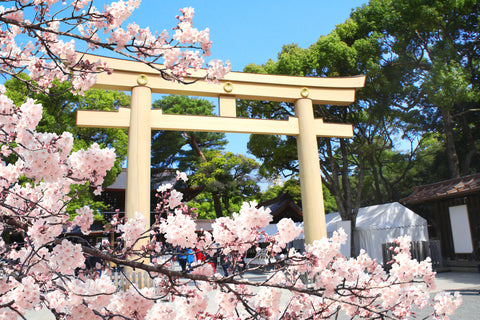
Looking for something to do during your visit to Tokyo? Let’s explore the key events and festivals in Harajuku that attract visitors and locals alike.
-
Yoyogi Park Wanwan Carnival: April 6–April 7.
-
Green Ireland Festival and St. Patrick’s Day Parade 2024: March 16–March 17.
-
Meiji Shrine Spring Grand Festival: Late April–Early May
-
Tokyo Rainbow Pride: April 19–May 21
-
Harajuku Omotesando Super Yosakoi 2024: Late August
-
Tokyo Jazz Festival: Late August
-
Omotesando Halloween Pumpkin Parade: Late October
Creative Spaces: Art and Design in Harajuku

When it comes to art and design in Harajuku, the Design Festa Gallery is the place to be. The gallery consists of two buildings on Takeshita Street. When inside, there are 75 exhibition spaces for you to explore. Art pieces range from neon paintings to stone sculptures. What we love most about Design Festa Gallery is that it showcases the creative talents of local and international artists without collecting sales commissions. Other places to enjoy art and design in Harajuku include Bunkamura, the America-Bashi Gallery, and the Ota Memorial Museum of Art.
Navigating Harajuku: Tips for First-Time Visitors

And now for some quick practical tips for first-time visitors to Harajuku:
-
Many stores in the district do not open until 11 a.m. Be sure to check their websites or business pages.
-
If you’re trying to avoid crowds, weekdays are the best time to visit.
-
To get more fashion options, visit on weekends.
-
Expect to join queues at cafes and restaurants.
-
Be polite to everyone you meet and respectful of the local culture.
The Enduring Allure of Harajuku

Today, Harajuku has the status of a place of self-expression, innovation, and cultural fusion. If you want to experience its unique charm, you should visit the district next time you’re in Tokyo. And for your friends and family who can’t come to Tokyo with you, share the Japanese experience by choosing any of the authentic gifts at Bokksu Boutique.
Author Bio











